
The Yankees are going to need to make some notable moves if they want to earn the trust of their fanbase back and, most importantly, compete for a World Series next season. That being said, getting value on the market is important as well, as teams who can make those underrated signings that raise their floor and prove vital to a team’s championship aspirations. Part of the Yankees’ issues last season pertained to a lack of depth, and while this free agent class isn’t particularly deep, they can find helpful players for a bargain.
Knowing the Yankees need multiple bats and potentially starting pitching depth, the Yankees could look at these three players to provide them surplus value at a relatively low cost.
The Yankees’ Solution to Their Third Base Issues?
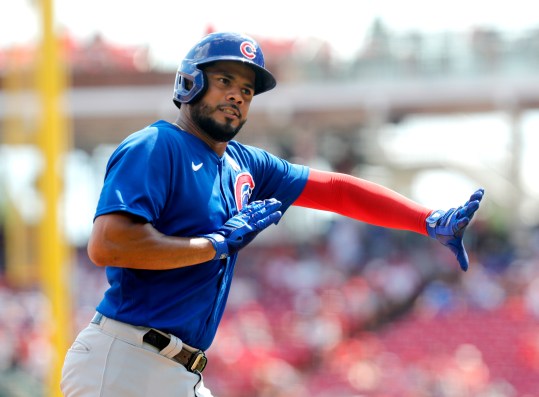
Jeimer Candelario rebounded after a terrible 2022 season that saw him get non-tendered by the Detroit Tigers and picked up by the Washington Nationals. They certainly got surplus value on that contract, as the 30-year-old switch-hitting infielder hit 22 HRs with a 117 wRC+ and 3.3 fWAR, eventually being dealt mid-season to the team he began his professional career with in Chicago.
The Yankees have struggled to get anything going at the hot corner, and while they have Oswald Peraza, who could take a step forward next year, it could make sense to make an addition to their infield and add another bat. Candelario does an excellent job of hitting doubles, as he hit the sixth-most two-baggers in the sport this past season, and has enough loft in his swing to take advantage of the Yankees’ short right field porch.
With a 10.2% Swinging Strike% and 7.8% Barrel%, he comes off as nothing more than slightly better than average in the contact and power departments, but his strong barrel control and 74th Percentile Sweet Spot% allowed him to put up some solid numbers across the board. If the Yankees could add a switch-hitting infielder who gives them around a 110 wRC+ and sound defense, they’ll deepen their lineup and take pressure off some of the younger players on the team to perform immediately.
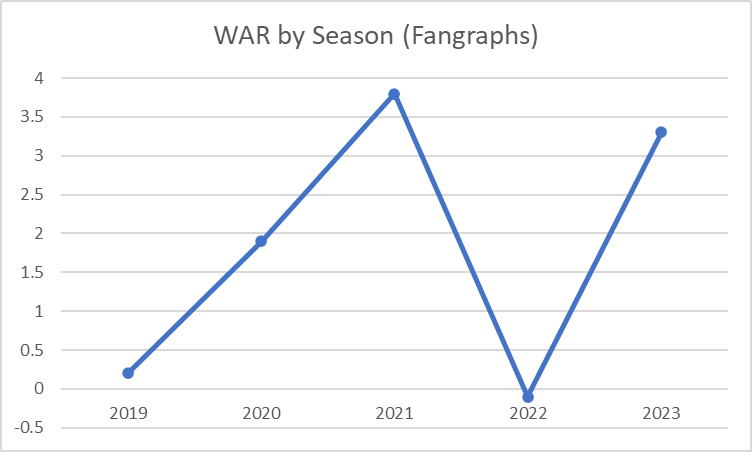
It looks like an up-and-down profile, but remember that a 1.9 fWAR in 2020 was really good, considering the fact that only 60 games were played that season. For three of his last four seasons, he’s been a 3-3.5 WAR player, but that -0.1 WAR in 2022 definitely lowers his price tag. Furthermore, he could be due for regression with a .346 wOBA and .319 xwOBA, although I think he’ll still remain a solid hitter at the position.
Spotrac has him getting a three-year deal at $34.8 million, and I think that’s around the annual average value he’ll get on the market. A good comparison here would be the case of Brandon Drury, who also had a 3-WAR season in 2022 and signed a two-year $17 million deal, and while I think Drury was certainly underpaid, Candelario does have a much better track record of success. Drury had a 0.5 career fWAR prior to his 2022 breakout season, whereas Candelario had an 8.2 fWAR prior to his 2023 season.
Getting an extra year and double the guaranteed money is about where I’d evaluate Candelario, and taking him through his age-33 season would allow him to hit the market again at an age where he could still be a productive big leaguer and get another payday.
Finding a Backend Starter With New York Familiarity
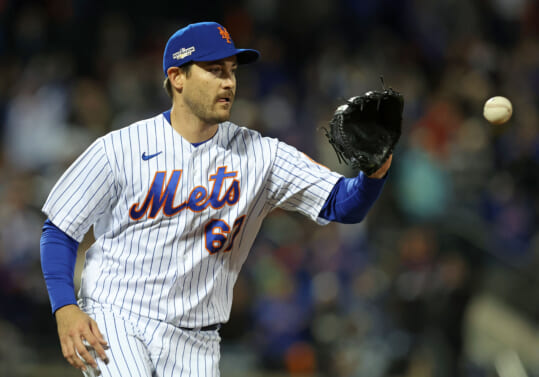
Speaking of players who left the NL East to go to the San Diego Padres, Seth Lugo could be the best-value signing for any team on the free-agent market. Lugo put up a 3.57 ERA (86 ERA-) and 3.83 FIP this past season, striking out 23.2% of batters faced and putting up a 45.2% groundball rate as well. His buzzsaw curveball still has its signature spin, but it was actually his two fastballs that elevated him from questionable reliever to strong starter.
Batters may have had a 90.7 MPH Exit Velocity against his sinker, but with a 54.5% GB% on the pitch and 24.5% called strike rate, it resulted in just a .281 wOBA and .297 xwOBA, with a +11 Run Value leading the way for his pitch mix. His four-seamer also had a 32.6% Called Strike + Whiff% and +7 Run Value, and that was due to its 16.9″ of vertical ride at a solid 93.4 MPH. These two pitches combined for a 97th Percentile Run Value on fastballs, and while both graded out as below-average in terms of Stuff+, his elite command of both offerings makes it hard to do damage against.
Lugo struggled to find a breaking ball offering all season, with his slider and curveball combining for -8 Run Value, but he might have found something in a sweeping slider. Towards the end of the season, Lugo began ripping a brand new sweeper, and on a start on August 18th, he threw 13 sweepers in a six-inning performance against the Diamondbacks, where he struck out nine batters and walked just three, shutting them out and going on a stretch over his final eight starts where he posted a 2.39 ERA and 3.62 FIP.
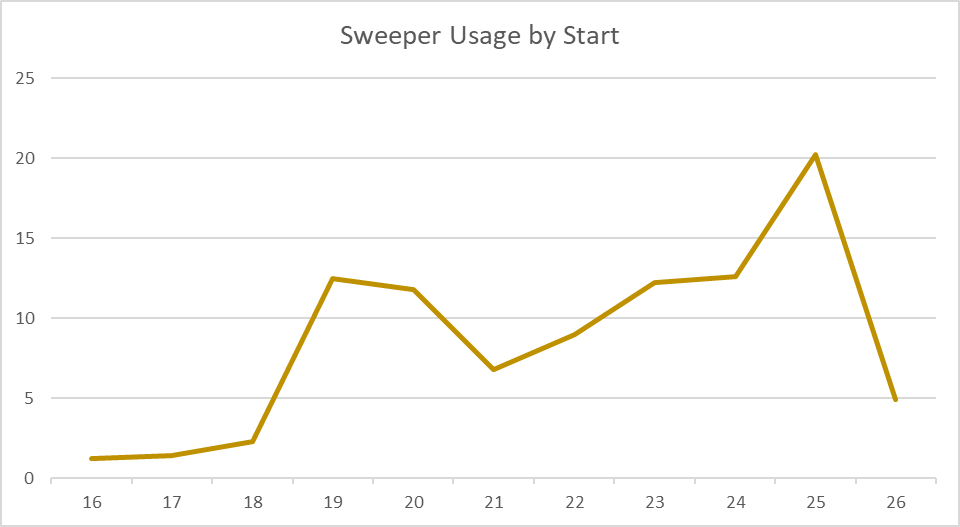
The Yankees are one of the top organizations for developing sweepers, and if he can develop that pitch, I think he’ll be able to better platoon against lefties and righties. His curveball has traditionally been his go-to strikeout pitch, but as a starter, you face more batters more times through the order, and righties have historically performed better against pitches (like curveballs) that rely more on vertical deception than horizontal deception in right-on-right matchups.
Right-handed hitters had a .325 wOBA against his curveball, whereas lefties only had a .284, and that’s where a sweeper comes into play. Sweepers prioritize heavy horizontal movement, and in right-on-right matchups, horizontal sweep is king for putting batters away, and Lugo could try to platoon his breaking balls for the right situations. He could still keep his gyro slider as well, a pitch that had a 112 Stuff+ and good damage control (.331 xwOBACON), especially against left-handers due to its roughly 14″ of vertical separation off of the four-seam fastball.
Spotrac believes he’ll get less than $10 million a year for three years, and I don’t think that’s quite right. A two-year $30 million deal would be more in line with what I’d expect, potentially with a third-year mutual option for his age-36 season. The veteran has the upside but also already put up a 2.8 fWAR in 26 starts this past season. He would be an excellent four or five-starter on any team and arguably could profile as a three if the sweeper takes that next step in 2024.
A Former Foe Becomes a New Friend
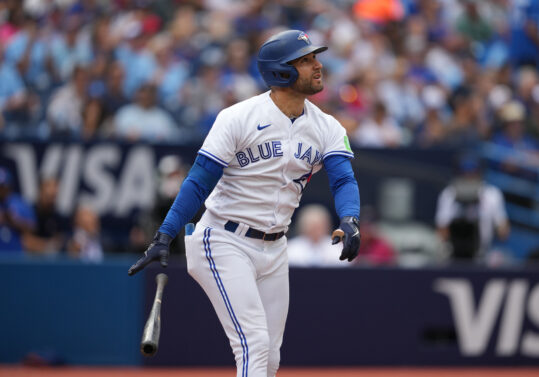
Sure, the Yankees could go out and get Cody Bellinger, but what if I told you that Cody Bellinger and Kevin Kiermaier nearly put up the same value in WAR last season? Bellinger posted a 4.4 rWAR and Kiermaier a 3.9, and while that is pretty facetious since there’s a near 2-WAR gap on FanGraphs, I mention this simply to say that Kevin Kiermaier is a good player. After posting a 104 wRC+ and having another Gold Glove season out in centerfield, the two-time All-Star could be the perfect fit for the Bronx Bombers.
Before you call him another Harrison Bader, there’s one big thing that fans seem to overlook, and that’s about Kiemaier being left-handed. Sure, just like Bader, there’s an injury risk, and the value predominately comes from defense, but if Harrison Bader hit righties better than lefties, it’s likely that he’d still be their centerfielder. Kiermaier has a career 103 wRC+ versus right-handed pitching with a .751 OPS against them this past season. The Yankees have a great lineup for hitting lefties, as they finished 6th in wRC+ against lefties (114) this past season.
Kiermaier aids the Yankees offensively in an area they severely lack hitting, and of course, the glove is something that would greatly help the Yankees in centerfield. If the Yankees truly want Juan Soto, they know it’s going to come with sloppy defense in left field, which is fine because he’s a future Hall of Famer in his prime, but it places a premium on strong defense in center field. Jasson Dominguez is still not a sure thing defensively out there, and if the Yankees want to have outfield versatility, Kiermaier certainly helps.
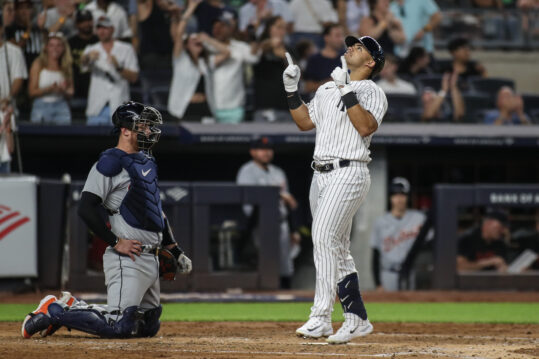
What if Jasson Dominguez can return before his expected date, although in a limited role as a DH? Well, that would mean that you’d still need three outfielders, and that lineup could get scary with Soto-Judge-Dominguez anchoring the middle of the order. How about if Jasson Dominguez is healthy? Well, they could put him in LF, rotate Judge and Soto at the DH spot, and the defense Kiermaier provides in centerfield would anchor whatever defensive unit they run out there.
Soto would actually profile extremely well for right field in the Bronx, with a strong arm that allowed him to post +2 Arm Value on Statcast, and his plus-reaction times with poor routes are a lot easier to overcome in the smaller dimensions out there. This also allows Judge, who is entering his age-32 season, to load manage a little, but the looming question would be how Giancarlo Stanton fits into the equation.
If he has a strong start to the season, then you can wait on Dominguez’s recovery to play centerfield and keep Stanton as the DH, making Kiermaier a nice insurance option in case of injury. If he gets hurt or plays poorly, then you have a contingency plan for that as well, and the overall outfield depth keeps the Yankees prepared in the situation that something unforeseen befalls a superstar or key player on the roster. What the Yankees have historically lacked is the built-in plan to keep their roster intact during an injury wave, and Kiermaier provides that.
Spotrac believes he’ll get two years at $14 million, and I think that’s below his market value. I believe it’ll look more like two years, $20 million, and if he’s a 1.5 or 2 WAR player, he’ll net the return on investment the Yankees are looking for, but if he’s able to be that 2.5 or 3 WAR player that he could be, the Yankees will have one of the deeper lineups in baseball as he slots right into the bottom third of their order.
